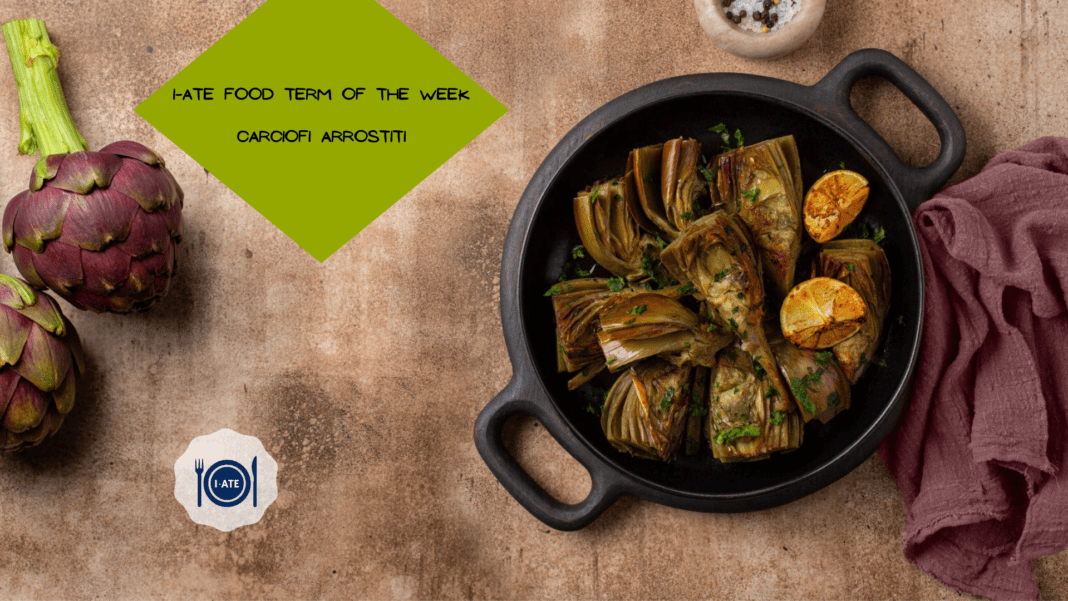
From the Friday of the Octave of Easter to the pursuing Monday the streets and air of Pagani – in close proximity to Salerno in the Campania region of Italy – are thick with the smoke of fireworks and carciofi arrostiti (roasted artichokes) as element of a centuries-outdated ritual celebrating the feast of Our Lady of the Hens (Madonna del Carmelo detta “delle galline”).
The story has it that some hens scratching the soil located a panel depicting the Madonna del Carmelo this was assumed as a divine indication by the locals and religious authorities who decided to establish a Sanctuary in her honour. Considering that then, the spiritual feast has revolved all-around a procession of the statue of the Madonna del Carmine transported on a cart to which people today supply different birds, but it also hinges upon unchanged gastronomic traditions the locals preserve and unfold painstakingly. The classic foods consumed in the course of the 4-day celebration are tagliolini al ragù, casatiello, tortano and, over all, carciofi arrostiti.

The artichoke is native to the japanese Mediterranean basin, which include the Aegean Islands, Cyprus, North Africa and Ethiopia, and it was currently preferred among the Greeks and the Romans, who referred to it as cynara and attributed to its fleshy leaves an aphrodisiac electrical power. Without a doubt, Pliny the Elder in ‘Naturalis Historia’ extolled its aphrodisiac and depurative powers, and Pharaoh Ptolemy Evergete of Egypt (3rd century B.C.) obliged his soldiers to consume them just before every battle. Cynara was also the name of a Greek nymph –called like this due to the fact of her ash-blond hair and eco-friendly-purple eyes – turned into a environmentally friendly-purple artichoke with bristly leaves and a thorny heart by Jupiter, whose love for nymphs was unrequited.

Heading back to the feast, artichokes are cooked by households in courtyards, on balconies and in so-named toselli (spaces of worship embellished with fantastic drapes and a photo of the Madonna del Carmelo) by making use of a traditional cooking software identified as fornacella (a charcoal-fed grill). Artichokes are washed and beaten with the tip of the leaves pointing to the table so that they spread out and can be quickly stuffed with fresh new garlic and parsley. Just after 30 minutes, the burnt outer leaves are cleaned off with the tip of a knife and olive oil is extra. Customarily, it is served on a slice of pane cafone, which absorbs the flavours of the oil and the seasonings.
A equivalent culinary custom rooted in Italy is that of the so-referred to as carciofo alla giudia (Jewish-design and style artichokes), a speciality of Roman Jewish delicacies at first conceived to rejoice the conclusion of the Yom Kippur quick but now well-liked with Romans from all communities.
Photograph Credit history: Domenico Varone
References
Cineuropa – the ideal of european cinema. 2022. Pagani: Mother Nature and the Virgin Mary – Cineuropa. [ONLINE] Available at: https://cineuropa.org/en/newsdetail/326376/. [Accessed 24 May 2022].
www.comunedipagani.it. 2022. No website page title. [ONLINE] Accessible at: https://www.comunedipagani.it/eventi/madonna_delle_galline_2008/depliantb.pdf. [Accessed 24 May 2022].
Sinatore Gerardo. 2012. “Madonna de’ Pagani detta De’ Galline: Cronomitostoria della Festa di un Popolo”. ISBN: 1549555561.
Storie di Napoli. 2022. I carciofi arrostiti: il sapore della domenica a Pagani. [ONLINE] Available at: https://storienapoli.it/2021/04/26/carciofi-arrostiti-pagani/. [Accessed 24 May 2022].
the Guardian. 2022. The foodie traveller … on artichokes, served ‘Jewish-style’, in Rome | Rome vacations | The Guardian. [ONLINE] Available at: https://www.theguardian.com/journey/2015/jan/25/rome-jewish-foods-eating places-foodie-italy. [Accessed 24 May 2022].
Published by
Francesco Nacchia, PhD in “European Languages and Specialised Terminology” (College of Naples “Parthenope”)



